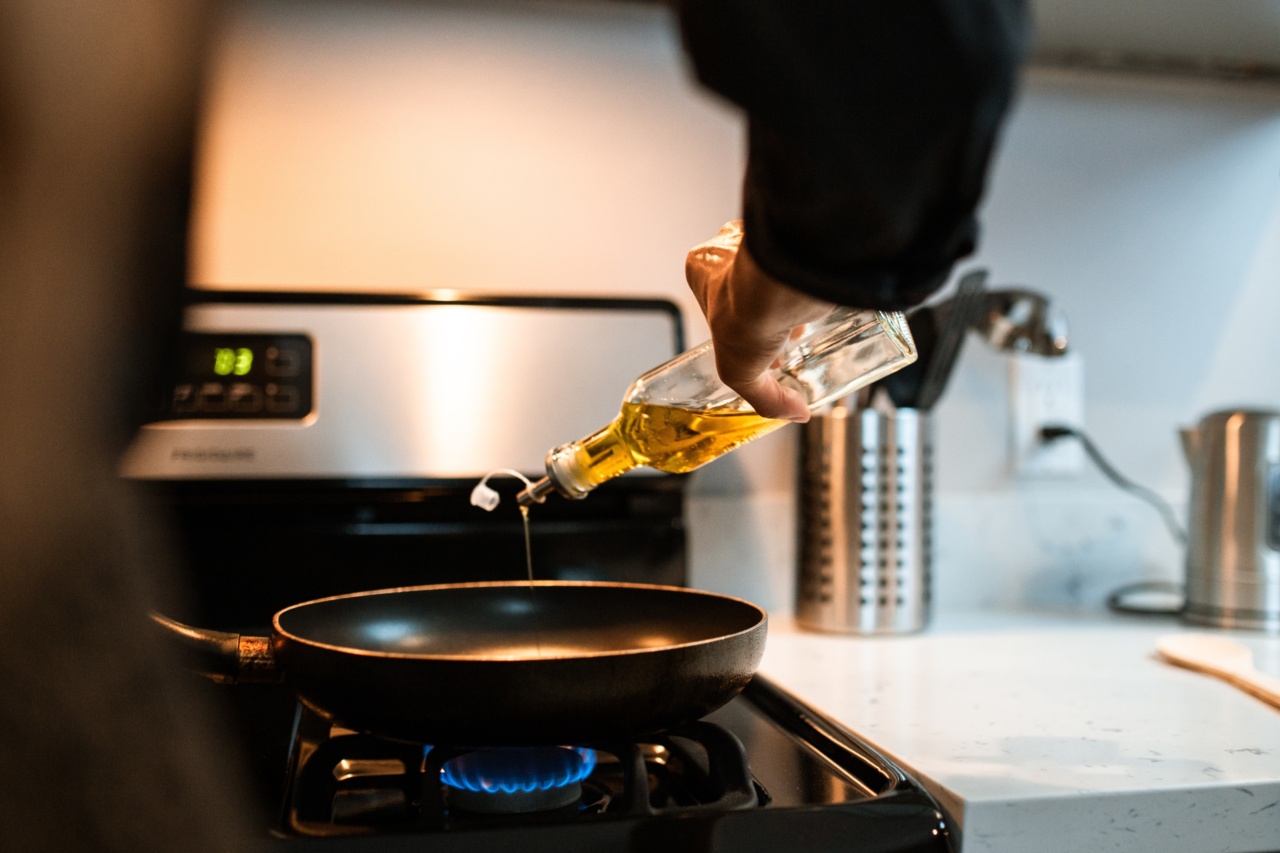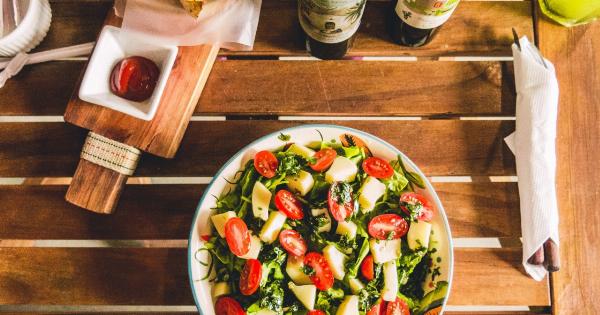Olive oil is one of the healthiest oils in the world. It is rich in monounsaturated fatty acids and antioxidants, which help to lower cholesterol levels, reduce inflammation, protect the heart, and fight free radicals.
Furthermore, olive oil is versatile and delicious, and can be used for cooking, baking, frying, salad dressings, marinades, and dips.
However, as with any food, there are certain mistakes that people make when using olive oil. These mistakes can affect the quality, taste, and nutritional value of the oil, and even make it harmful to health.
In this article, we will explore the most common mistakes when using olive oil and how to avoid them.
1. Using the Wrong Type of Olive Oil
There are different types of olive oil on the market, and each has its own characteristics. The main types of olive oil are:.
- Extra virgin olive oil (EVOO): The highest quality oil, extracted from the first cold pressing of the olives, with no chemicals or heat involved. It has a fruity flavor, low acidity (less than 0.8%), and high levels of antioxidants.
- Virgin olive oil: The second quality oil, also extracted from the first cold pressing of the olives, but with slightly higher acidity (up to 2%). It has a milder flavor than EVOO.
- Refined olive oil: A lower quality oil that is made from virgin olive oil that has defects, such as high acidity or bad flavor, which are removed through chemical or physical processes. This oil is often bland and tasteless.
- Pomace olive oil: The lowest quality oil, made from the leftover pulp, skins, and seeds of the olives after the first pressing. It is extracted with solvents and heat, and has little flavor or nutritional value.
The mistake that many people make when using olive oil is using the wrong type for their purpose.
For example, extra virgin olive oil is best for salad dressings, dipping, and drizzling over cooked food, as the delicate flavor and aroma are not altered by heat. On the other hand, refined olive oil or pomace olive oil are better for cooking, frying, and baking, as they have a higher smoke point (the temperature at which the oil starts to smoke and degrade) and a neutral flavor.
How to avoid it: Choose the right type of olive oil for your purpose, depending on the heat, flavor, and nutritional requirements.
Read the labels carefully and look for the quality certification, such as PDO (protected designation of origin) or PGI (protected geographical indication), which indicate that the oil is made from local, high-quality olives and processed according to strict standards.
2. Storing Olive Oil Improperly
Olive oil is sensitive to light, heat, and air, which can cause it to oxidize, rancid, and lose its flavor and nutrients.
Therefore, it is important to store olive oil in a cool, dark, and airtight container, away from direct sunlight, heat sources, and moisture.
The mistake that many people make when storing olive oil is keeping it in the wrong place, such as on the kitchen counter, near the stove, or in a clear glass bottle. This can expose the oil to light, heat, and air, and accelerate its spoilage.
How to avoid it: Store olive oil in a cool pantry or cupboard, away from direct sunlight and heat sources. Use a dark glass bottle or a tin can with a tight lid, to minimize the exposure to air and light.
Avoid buying large containers of olive oil, as they may take longer to finish and increase the risk of spoilage.
3. Cooking Olive Oil at High Temperature
Olive oil has a lower smoke point than many other oils, such as canola, soybean, or peanut oil. This means that it starts to smoke and break down at a lower temperature, releasing harmful compounds and losing its flavor and nutrients.
Therefore, it is best to use olive oil for low to medium heat cooking, such as sautéing, simmering, or roasting, rather than for high heat cooking, such as deep frying or grilling.
The mistake that many people make when cooking with olive oil is using it at high temperature, such as for searing or frying.
This can create smoke, burn the food, and produce harmful substances, such as acrolein, acrylamide, or polycyclic aromatic hydrocarbons (PAHs), which have been linked to cancer and other diseases.
How to avoid it: Use olive oil for low to medium heat cooking, and choose other oils for high heat cooking, such as avocado, grapeseed, or coconut oil.
Use a thermometer to check the temperature of the oil, and avoid exceeding its smoke point (around 375°F for EVOO and 460°F for refined olive oil). If the oil starts to smoke or smell burnt, discard it and start again with fresh oil.
4. Using Rancid or Old Olive Oil
Olive oil has a shelf life of about 18-24 months, depending on the quality, storage conditions, and oxidation rate. Over time, the oil can become rancid, which means that it has gone bad and become unfit for consumption.
Rancid olive oil has a stale, musty, or rancid smell and taste, and contains harmful compounds, such as free fatty acids, peroxides, and aldehydes, which can damage the body.
The mistake that many people make when using olive oil is using rancid or old oil, either because they don’t know its age or because they want to save money or avoid waste.
This can compromise the quality, taste, and nutritional value of the food, and even lead to health problems.
How to avoid it: Check the label or date of the olive oil before buying it, and choose the freshest one available. Store the oil properly, as mentioned earlier, and use it within its shelf life.
To check if the oil is rancid, smell it and taste it before using it. If it has a bad odor or taste, discard it and buy fresh oil.
5. Overusing Olive Oil
Olive oil is healthy and delicious, but it is also high in calories and fat. One tablespoon of olive oil contains about 120 calories and 14 grams of fat, which can add up quickly if you use too much of it.
Therefore, it is important to use olive oil in moderation and balance it with other healthy fats, such as nuts, seeds, avocados, and fatty fish.
The mistake that many people make when using olive oil is using too much of it, either because they like the taste or because they think it is healthier than other oils. This can lead to excessive calorie intake, weight gain, and other health problems.
How to avoid it: Measure the amount of olive oil you use, and use it sparingly. One to two tablespoons per meal is usually enough for most purposes.
Use other healthy fats in your diet, such as nuts, seeds, avocados, and fatty fish, to diversify the nutrients and flavors. If you have a medical condition that requires you to limit your fat intake, consult your doctor or a registered dietitian.
6. Ignoring the Quality and Origin of Olive Oil
Olive oil is often adulterated or mislabeled, especially in the mass market, where profit margins are high and quality standards are low.
Some olive oils are diluted with cheaper oils, such as sunflower or canola oil, or labeled with false claims, such as “extra virgin” or “cold-pressed”, without meeting the requirements.
The mistake that many people make when using olive oil is ignoring the quality and origin of the oil, and trusting the brand or price tag.
This can lead to buying low-quality or fraudulent olive oil, and missing out on the health benefits and flavor of the real thing.
How to avoid it: Buy olive oil from reputable sources, such as local farmers’ markets, specialized stores, or certified brands.
Read the labels carefully, and look for the quality certification, such as PDO or PGI, which ensure that the oil is made from high-quality olives and processed according to strict standards. Taste the oil before buying it, and look for fruity, grassy, or peppery notes, which indicate freshness and quality. Learn about the different varieties and flavors of olive oil, and experiment with them in your cooking and recipes.
7. Not Using Olive Oil as Part of a Healthy Lifestyle
Olive oil is not a magic bullet for health, but rather a part of a healthy lifestyle that includes a balanced diet, regular physical activity, stress management, and other healthy habits.
While olive oil can provide many health benefits, it cannot compensate for an unhealthy diet, sedentary lifestyle, or chronic stress.
The mistake that many people make when using olive oil is relying solely on it for their health, without taking care of other aspects of their lifestyle.
This can lead to a false sense of security, and missing out on the full potential of healthy living.
How to avoid it: Use olive oil as part of a healthy and balanced diet that includes plenty of fruits, vegetables, whole grains, lean protein, and water.
Combine olive oil with other healthy fats, such as nuts, seeds, avocados, and fatty fish, and limit your intake of saturated and trans fats, refined sugars, and processed foods. Engage in regular physical activity, such as walking, jogging, cycling, or swimming, and seek ways to reduce stress and improve your mental health. Consult your doctor or a registered dietitian for personalized advice and guidance.
Conclusion
Olive oil is a valuable and versatile ingredient in the kitchen and a potent ally for health.
However, to fully enjoy its benefits, it is important to avoid the common mistakes when using olive oil, such as using the wrong type, storing it improperly, cooking it at high temperature, using rancid or old oil, overusing it, ignoring the quality and origin, and not using it as part of a healthy lifestyle.
By choosing the right type of olive oil for your purpose, storing it in a cool and dark place, using it for low to medium heat cooking, checking its freshness, using it sparingly, buying from reputable sources, and combining it with other healthy habits, you can maximize the flavor, nutritional value, and health benefits of this precious oil.




























